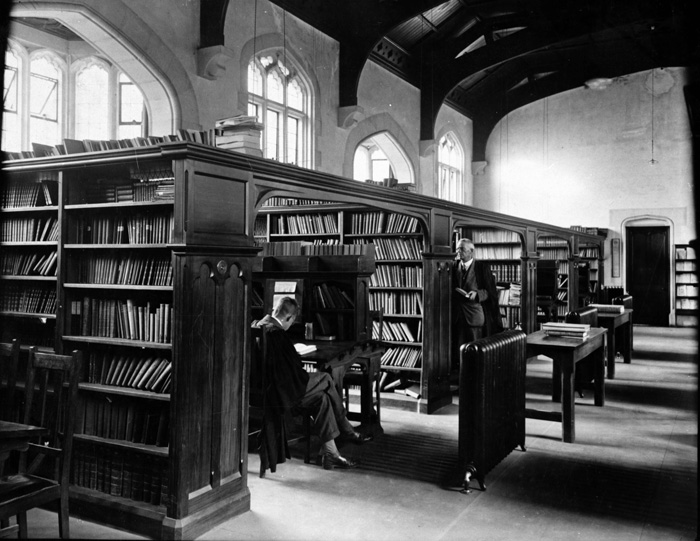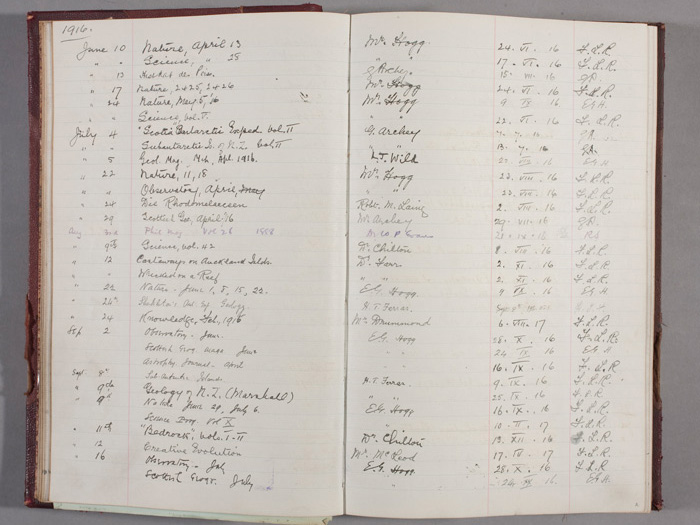For many students at University a library is central to their experience of self guided study. At Canterbury College, arrangements for a library were not initially encouraging, and the lack of texts goes some way to explaining why during Professor Macmillan Brown’s time there was a busy industry revolving around the copying and sale of his lecture notes. It was claimed that in one year two students earned £600 from the sale of these notes. Eventually concerned students asked the Board of Governors to spend money on reference books, but even by 1903 only £25 per annum was set aside for texts. Funding rose to £100 per annum in 1907, and the Library collection slowly grew through purchases and donations to 4000 volumes by 1913. Matters were little different at the adjacent boys and girls schools. The Boys' School library opened 1882 with 450 books. A vote by students in 1901 decided that the most popular books were 'Robbery under Arms', 'Westward Ho', and 'Treasure Island'.
Prior to the construction of a dedicated College Library in 1916, students and staff alike were agitating for better facilities. The 1906 College Review includes an article entitled ‘The College Library – A Vision’ which described the desire for a grey stone building, two storeys, north facing, lined with well lit alcoves, carpet underfoot, and comfortable leather chairs where one could sit in sunshine reading and smoking. The Review proclaimed “But once let Canterbury College obtain a first-class library, well housed and well managed, and as long as any value is set on human knowledge, her position in the university, and her importance as a seat of learning, will be assured.”


